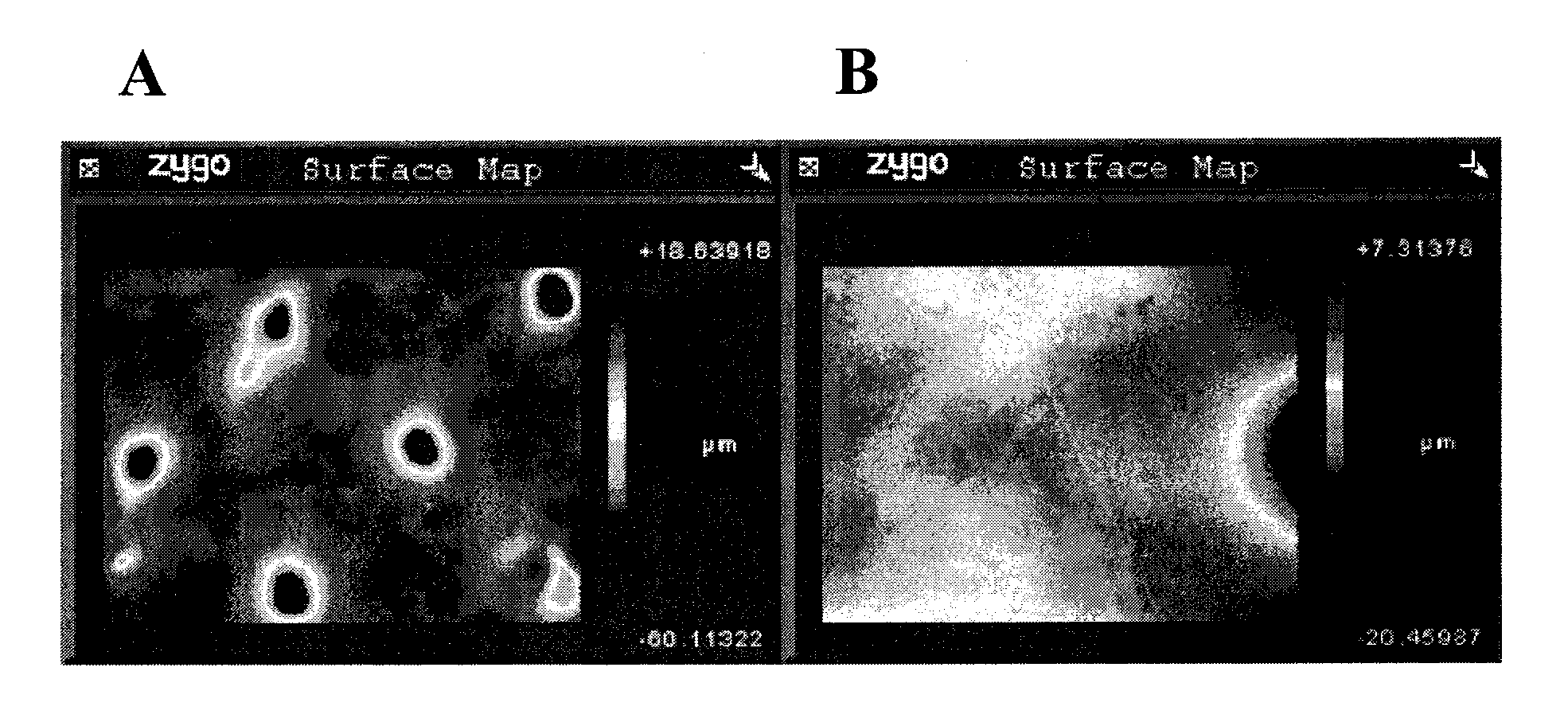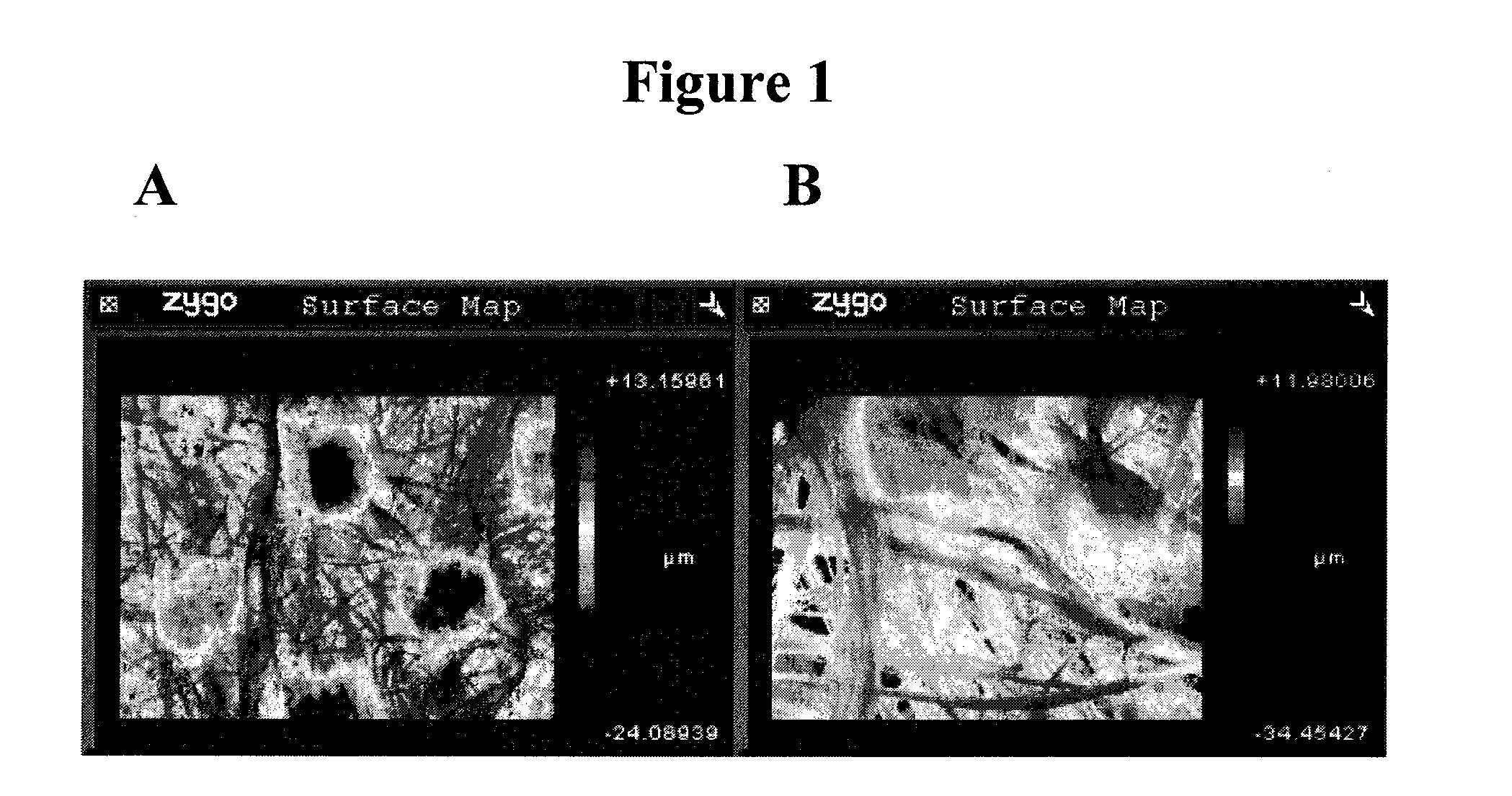Diffusive light reflectors with polymeric coating
a light reflector and polymer coating technology, applied in the direction of synthetic resin layered products, woven fabrics, metal layered products, etc., can solve the problems of limited forming of metal-plexifilamentary film-fibril sheet laminates, affecting the light distribution effect, and reducing the efficiency of fixtures, etc., to achieve the effect of improving the light distribution
- Summary
- Abstract
- Description
- Claims
- Application Information
AI Technical Summary
Benefits of technology
Problems solved by technology
Method used
Image
Examples
example 1
[0043]Low density polyethylene combined with 14% TiO2 pigment by weight was extruded onto Tyvek® 1070D plexifilamentary film-fibril sheet to achieve a coating weight of 22 grams per square meter. The extruded layer was passed over a matte-finish chilled roll imparting a random micro-finish topography. The total thickness of the coated sheet was measured at 215 microns. As a result of coating, the reflectance of the sheet increased from 93.5% (uncoated sheet) to 96% (coated sheet). The coating partially obscured the fiber pattern of the sheet resulting in a more uniform appearance. Machine oils put onto the surface were easily cleaned off without a visible stain. A sample of the coated sheet was exposed to 110° C. in a convection oven for 12 hours and suffered a 2% loss in reflectance. An additional sample was exposed to 80° C. in a convection oven for 12 hours without reflectance loss.
example 2
[0044]55% low density polyethylene, 33% high density polyethylene and 12% TiO2 pigment by weight were combined and extruded onto Tyvek® 1070D plexifilamentary film-fibril sheet to achieve a coating weight of 35 grams per square meter. The extruded layer was passed over a matte-finish chilled roll imparting a random micro-finish topography. The total thickness of the coated sheet was measured at 228 microns. The reflectance increased as a result of coating from 93.5% to 96.5%. As in Example 1, the coating partially obscured the fiber pattern for a more uniform appearance, and oils on the surface were easily cleaned off without a visible stain. The coated sheet was exposed to 110° C. in an oven for 12 hours without reduction in reflectance.
example 3
[0045]EMA resin (Lotryl® 20MA08) combined with 7% TiO2 was extruded onto the reverse (previously uncoated) side of the material from Example 1 to achieve a coating weight of 22 grams per square meter and passed over a matte-finish chilled roll for a matte finish. The total sheet thickness was measured at 218 microns. The reflectance of the EMA-coated side was measured as 94%. The EMA-coated side was then applied to 0.026″ (0.66 mm) thick unpainted cold rolled steel preheated to 80° C. The reflectance of the laminate face (side not bonded to metal) was measured at 95.7%
PUM
| Property | Measurement | Unit |
|---|---|---|
| Fraction | aaaaa | aaaaa |
| Percent by mass | aaaaa | aaaaa |
| Thickness | aaaaa | aaaaa |
Abstract
Description
Claims
Application Information
 Login to View More
Login to View More - R&D
- Intellectual Property
- Life Sciences
- Materials
- Tech Scout
- Unparalleled Data Quality
- Higher Quality Content
- 60% Fewer Hallucinations
Browse by: Latest US Patents, China's latest patents, Technical Efficacy Thesaurus, Application Domain, Technology Topic, Popular Technical Reports.
© 2025 PatSnap. All rights reserved.Legal|Privacy policy|Modern Slavery Act Transparency Statement|Sitemap|About US| Contact US: help@patsnap.com



